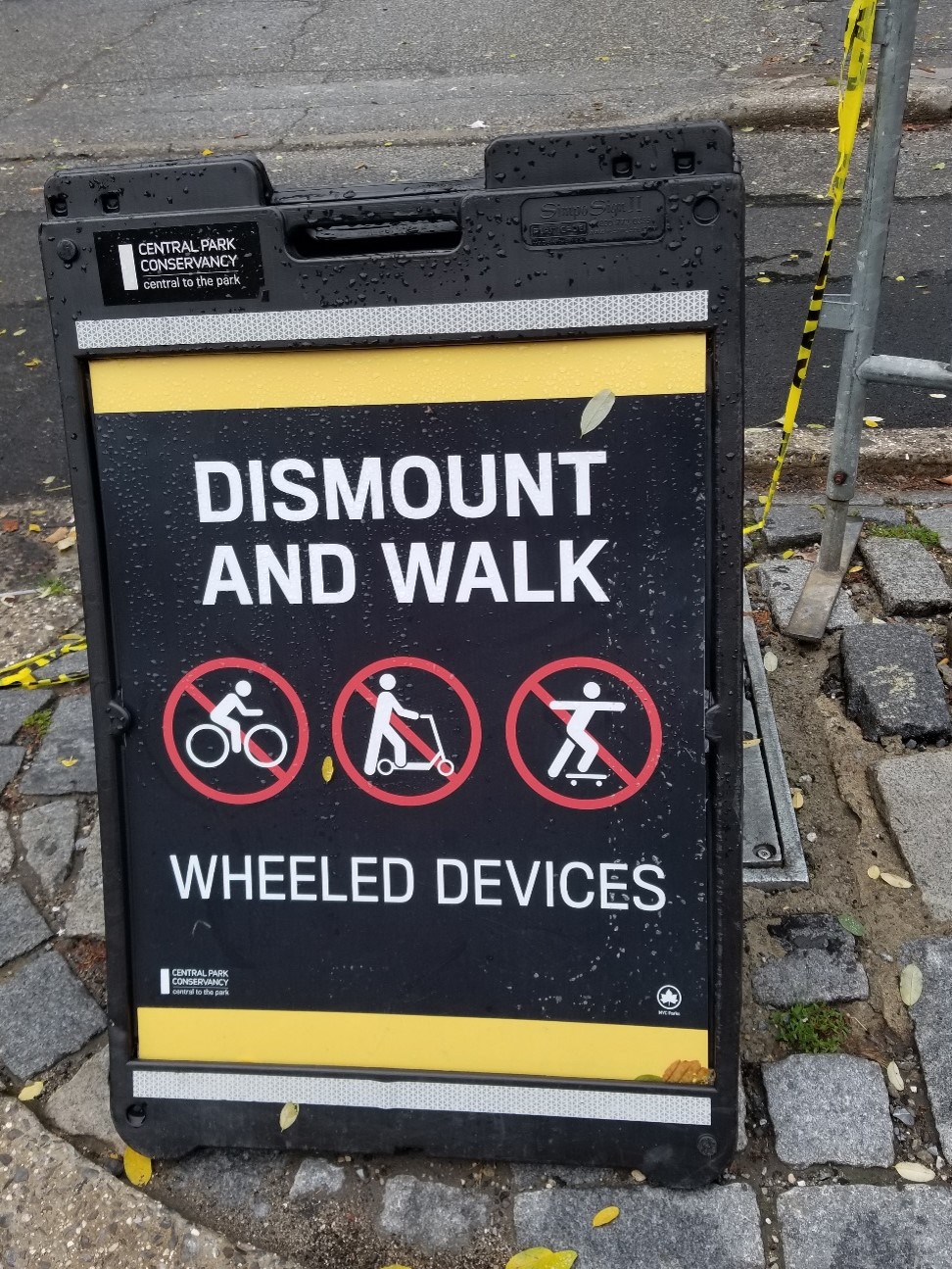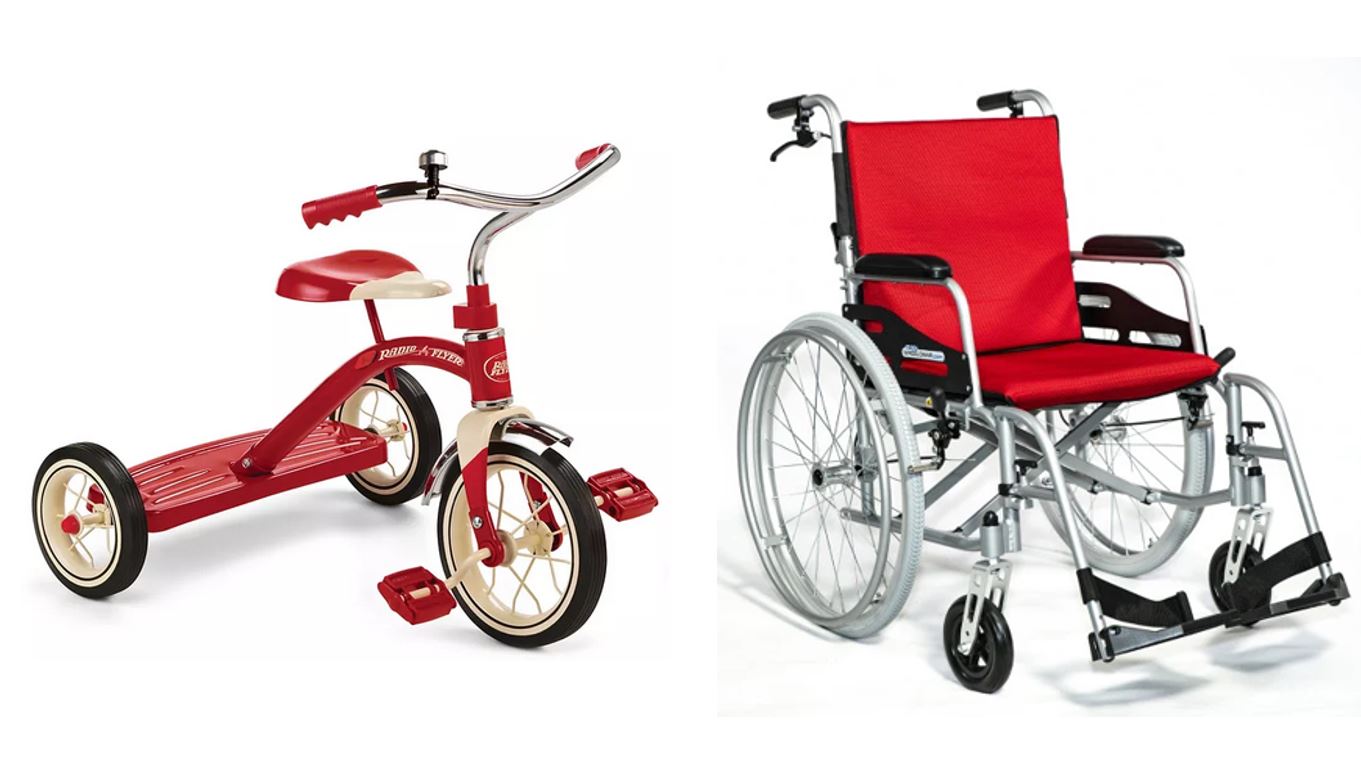14 Activity – List and Single-Property Categories (part 2)
The most obvious property shared by carts, bicycles, skateboards, and scooters is that they have wheels. Let’s change the list category definition in the YIELD TO PED sign into a category definition that uses “HAS WHEELS” as a test.
Here’s a sign that does that. It has the same goal as the YIELD TO PED sign, but it has a specific property test. People must DISMOUNT AND WALK if they are on WHEELED DEVICES. Because there is a property test, you are supposed to interpret the bicycle, scooter, and skateboard as examples, not as a complete list of the things that need to YIELD.

Does this category defined by the single property test of having wheels make sense to protect pedestrians? Let’s check that with other examples.
These two vehicles have wheels; do they need to yield to pedestrians?
 Oops! These vehicles have wheels but no one would expect a small child on a tricycle or a person in a wheelchair to yield to pedestrians.
Oops! These vehicles have wheels but no one would expect a small child on a tricycle or a person in a wheelchair to yield to pedestrians.
This example might seem a little silly to you, but it shows an important point about how categories are defined that is extremely important when it comes to laws and instructions. Let’s first review the two laws whose purpose is to protect pedestrians that were “built into” the two signs you analyzed.
- “Powered carts, bicycles, and skateboards must yield to pedestrians.”
This law defines the “things that must yield” category as a list. If you’re riding a scooter and don’t yield, that’s OK where this law applies because scooters are not in the list.
- “All wheeled devices, SUCH AS powered carts, bicycles, and skateboards, must yield to pedestrians.”
“SUCH AS” in the law indicates that having wheels is a property test and the three vehicles are included as examples. If you’re riding a scooter and don’t yield where this law applies, you are breaking the law. Because the second law is defined using a property test, not every member of the category needs to be mentioned.
You should now understand why people who write laws have to think hard about the CATEGORY STRUCTURE they use when they define categories. If they don’t, the law might not mean what they think it does and people will not behave as the lawmakers expected.
This kind of problem can easily happen in your school. Here are two instructions that your art teacher might give you. Can you see how they differ in category structure?
- “Make sure you take home your scissors, ruler, and paints for your art project this weekend because you will need those supplies.”
This instruction lists three things to take home for an art project and suggests that those are all the supplies you need.
- “Make sure you take home all the supplies you need for your art project this weekend.”
This instruction doesn’t list anything but makes you think more about the supplies you need. It might make you remember to bring home the art paper.

